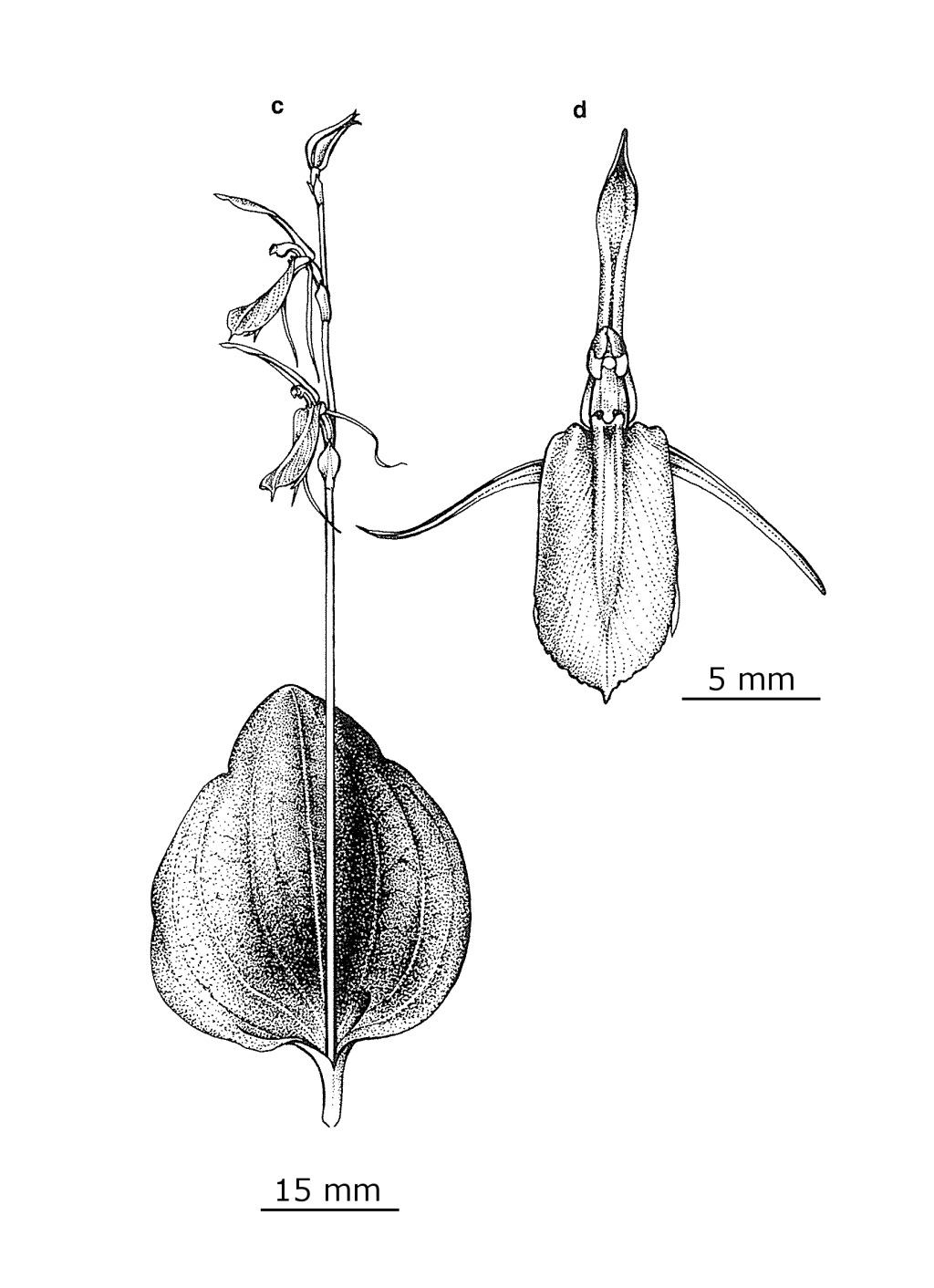Cyrtostylis robusta
D.L.Jones & M.A.Clem. Large GnatorchidFlowering plant 4–19 cm tall. Leaf cordate, kidney-shaped or circular, 16–53 mm long, 18–50 mm wide, light to medium green above, partially transparent below. Flowers 2–7, pinkish-red, c. 13 mm long; pedicel (including ovary) 5–11 mm long, subtended by bract less than half as long; dorsal sepal erect or incurved, linear-tapering, 10–13 mm long, obtuse; lateral sepals similar to dorsal sepal but projected forwards or spreading, usually under labellum; petals spreading or down-curved, linear, narrower than sepals but similar in length. Labellum projecting horizontally forward or somewhat decurved, sessile, oblong, 10–15 mm long, 4–6 mm wide, apex usually roundish with short tapered point, margins at distal end scalloped. Flowers Jul.–Sep.
Wim, GleP, Brid, VVP, GipP, OtP, WaP, CVU, GGr, NIS, EGL, WPro. Also WA, SA. Scattered across southern Victoria in coastal scrub and extending to forest habitats as far inland as Mt Arapiles in the west of the State.
Cyrtostylis robusta is a more robust species than C. reniformis, usually taller, with more flowers and larger floral parts, and with distinctly different coloured leaves. However, a study by Kores et al. (1993) showed that there are no clear disjunctions in organ sizes between C. robusta and C. reniformis, and that C. robusta cannot be maintained as a distinct taxon based on size alone. In intermediate cases, the labellum apex shape and leaf colour should enable the two taxa to be distinguished. Their ranges occasionally overlap in Victoria, but C. robusta flowers earlier.
Entwisle, T.J. (1994). Orchidaceae. In: Walsh, N.G.; Entwisle, T.J., Flora of Victoria Vol. 2, Ferns and Allied Plants, Conifers and Monocotyledons, pp. 740–901. Inkata Press, Melbourne.
 Spinning
Spinning


